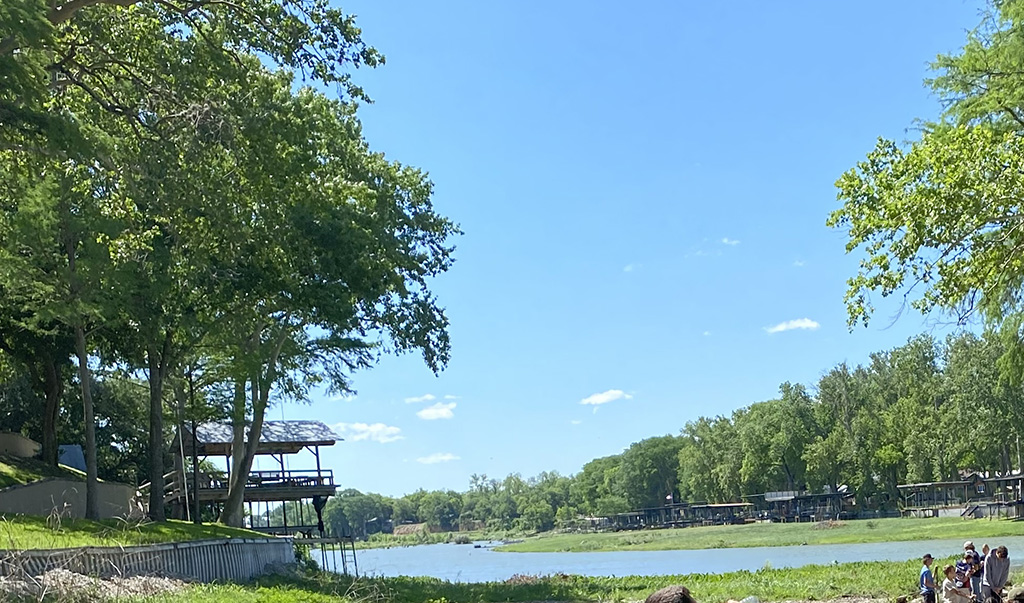by John Jefferson
As a kid, I fished once below the dam that formed Lake Dunlap. It was heavenly. Calm water, a softly gurgling current coming over the dam, cardinals calling from the trees that shaded most of the river.
Decades later, I fished from a bass boat on the lake side of that dam. It never occurred to me either time that a dam could break from age. On May 14, 2019, the Dunlap dam broke. That drained the lake by sundown. As far as I know, nobody was fishing on either side of the dam. That was fortunate.
More good fortune lay in the wake-up call the dam-break sounded to the Guadalupe-Blanco River Authority (GBRA) and lakeside landowners. There were other aging dams downstream. Probably a few stomachs got queasy thinking about what could have happened.
The GBRA and landowners held meetings and decided what to do. Foremost seemed to be repairing the Dunlap dam. The work began and is nearing completion. It was projected to be finished by May 2023. Work is still ongoing.
GBRA also worried about other dams constructed of similarly aging materials. Decisions were made to also replace or repair the dams that held back water forming lakes McQueeny and Placid — the next two lakes downstream from the Dunlap dam.
McQueeny is a lake formed by a wide river coming from Dunlap. Or it used to be. After the dam-break, it dropped 13-14 feet and resembled the river channel before the dam was built. Boat traffic became more hazardous due to stumps now closer to the surface. Unless you live there or have accommodating friends, there is no public access.
Lake Placid Is about the same, except it’s smaller and there is public access. A GBRA message dated June 19, 2023, says reconstruction on Placid and McQueeny has begun. Timeline for completion is said to be twenty-two months for Placid and twenty-four months for McQueeny. So then what?
I talked to two TPWD inland fisheries biologists, Dusty McDonald and Travis Tidwell. Both are familiar with the three lakes and dams. They said the fish are still there. Dunlap had produced a 14.94 -pound largemouth bass before the dam failed. A 43.2-pound flathead catfish was caught in 2009 and a 57-pound blue cat was landed in 2018.
McQuenny has yielded some big fish, too – a 13.12-pound largemouth and a 44.7-pound flathead catfish — although it’s more of pleasure-craft lake. Lake Placid has contributed a 12.6-pound largemouth and 46.15-pound flathead. All three lakes have white bass, crappie, and sunfish. What the fishing will be like after refilling depends upon what has happened to the habitat during construction time.
One positive change could be the vegetation that sprouted on the new shore while the lakes were down. That could provide fresh habitat for bait fish and bass when the lakes refill. They could resemble new lakes. That’s what happened on Lake O.H. Ivie after a drought and refilling.
Could these lakes resurrect as little Lake Ivies? Wait and see.
JJ





